A brief report on our first few days in Tasmania.
First thing, we plan to visit the MONA. We discover it’s closed on Mondays. We change tack and head for Port Arthur instead.
On the way, we come across the Unzoo. This turns out to be a fabulous place to see Tasmanian devils close up.
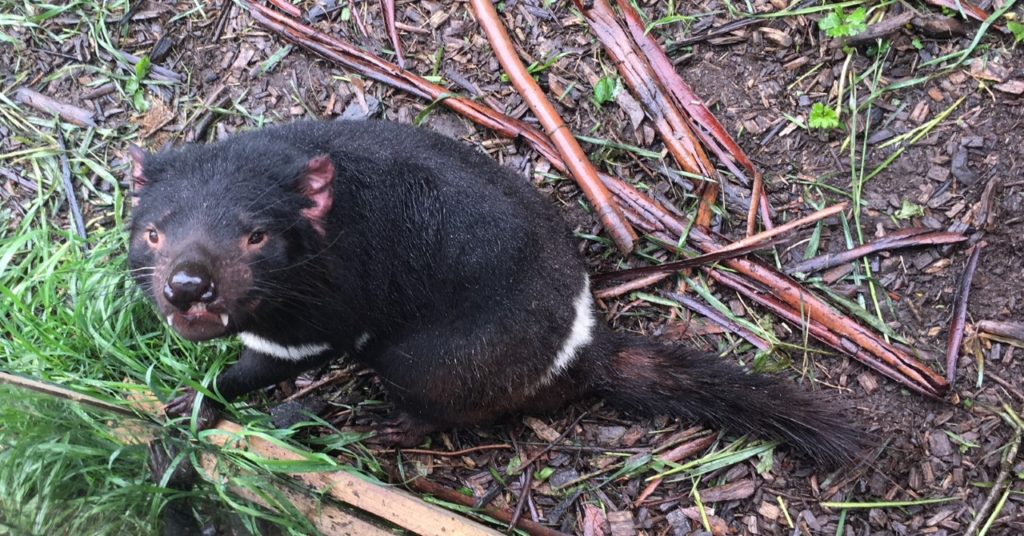
“Hell is empty and all the devils are here.” ― Shakespeare, The Tempest
Poor devils – they’re plagued with DFTD, which threatens to wipe them out. Devil facial tumour disease only appeared in the 90s, but is taking a severe toll on the Tasmanian devil population. It’s rare that a species becomes endangered through nature itself rather than through the shitty behaviour of humans, but this is the case.
They’re cute, but not exactly cuddly. Anyway, they don’t look anything like their Warner Brothers namesake.

Although they do share unspeakably powerful jaw strength. According to Wikipedia:
‘The Tasmanian devil has the most powerful bite relative to body size of any living mammalian carnivore, exerting a force of 553 N (56.4 kgf).’
We carry on to Port Arthur. Originally a dreaded penal colony, it is now a pleasant place to walk around.
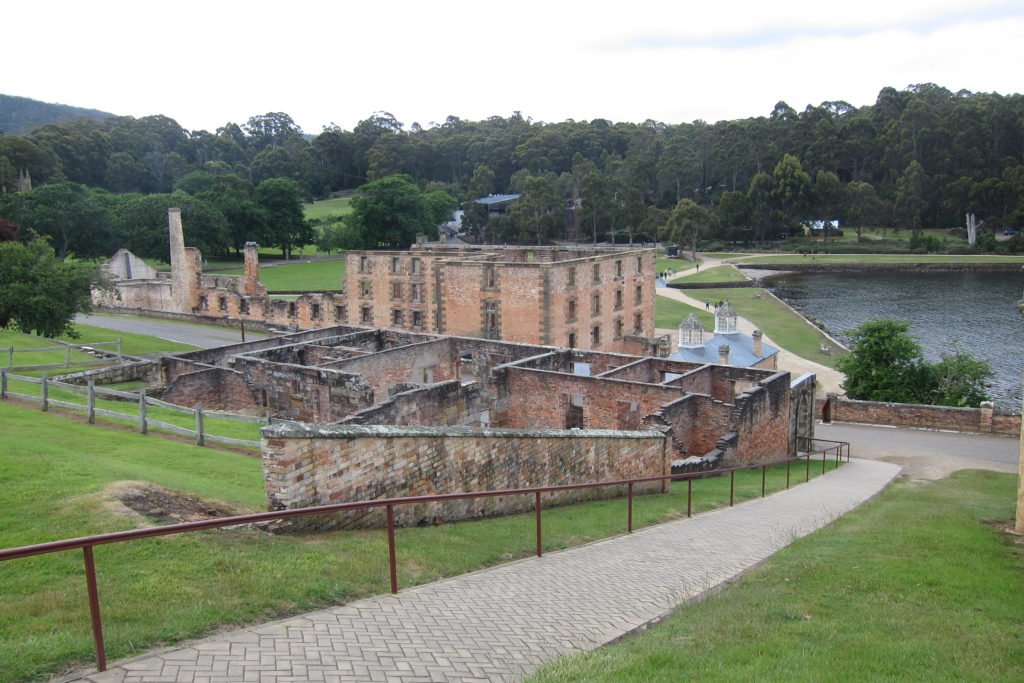
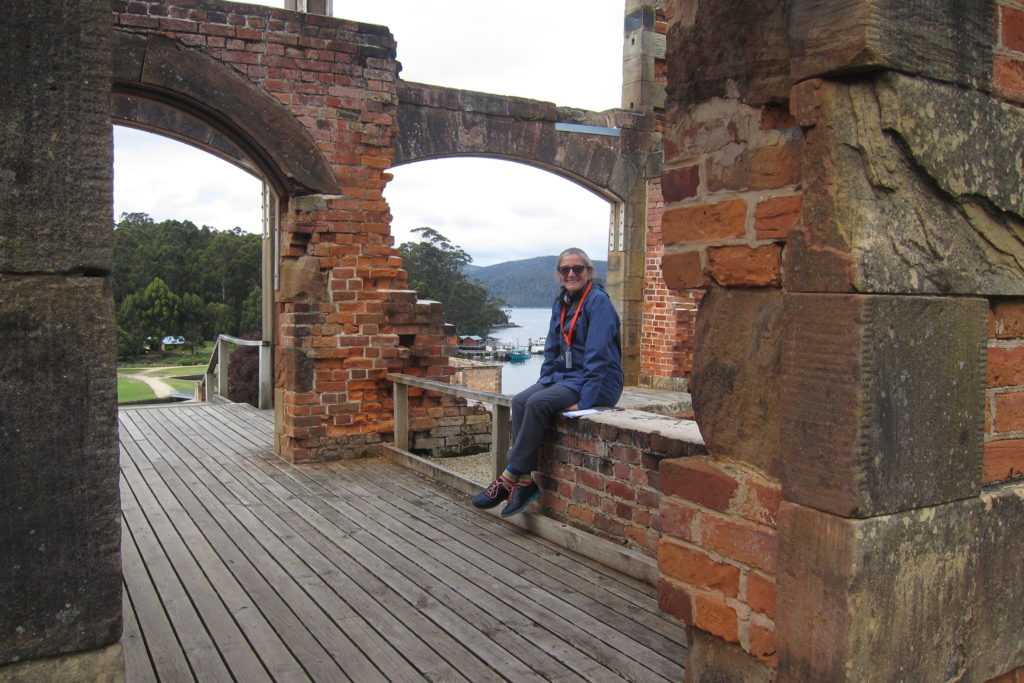
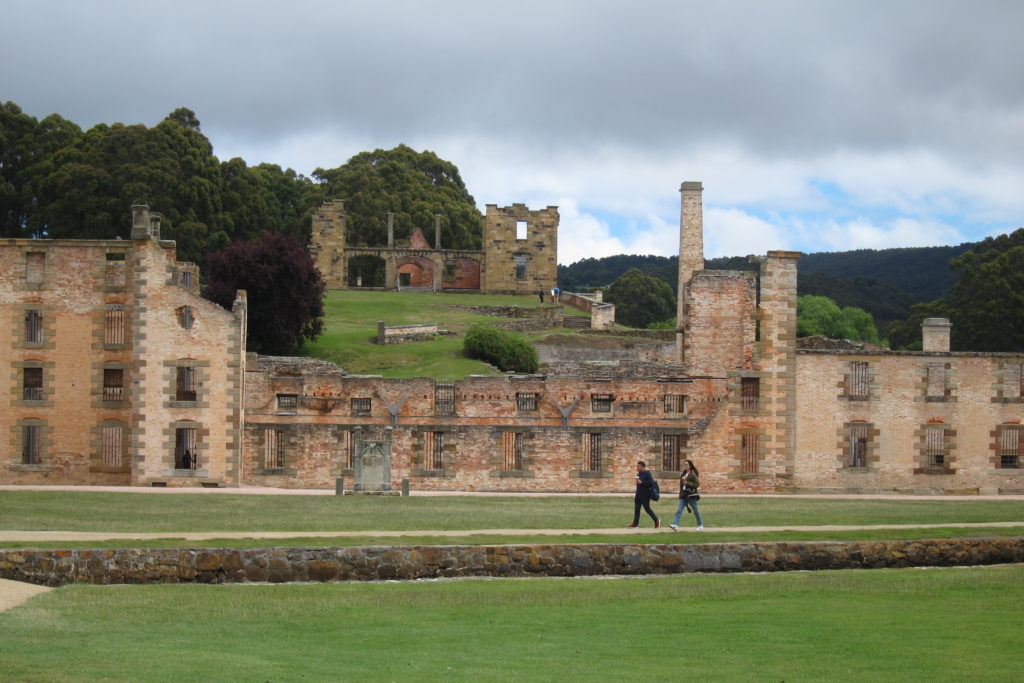
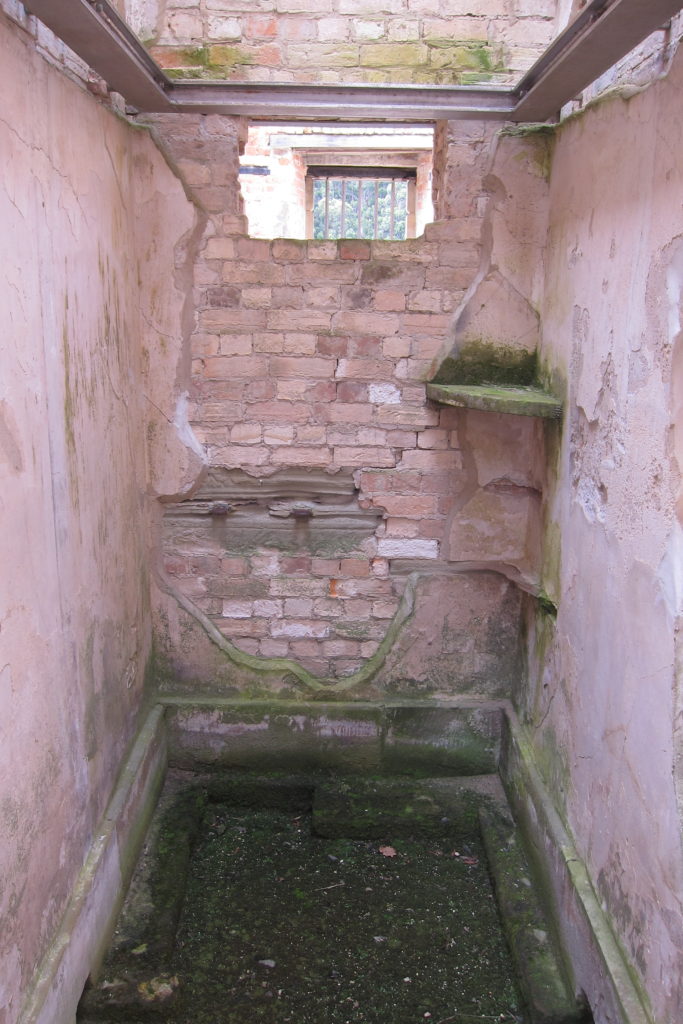
Hobart is a pleasant small port city. Very civilized.
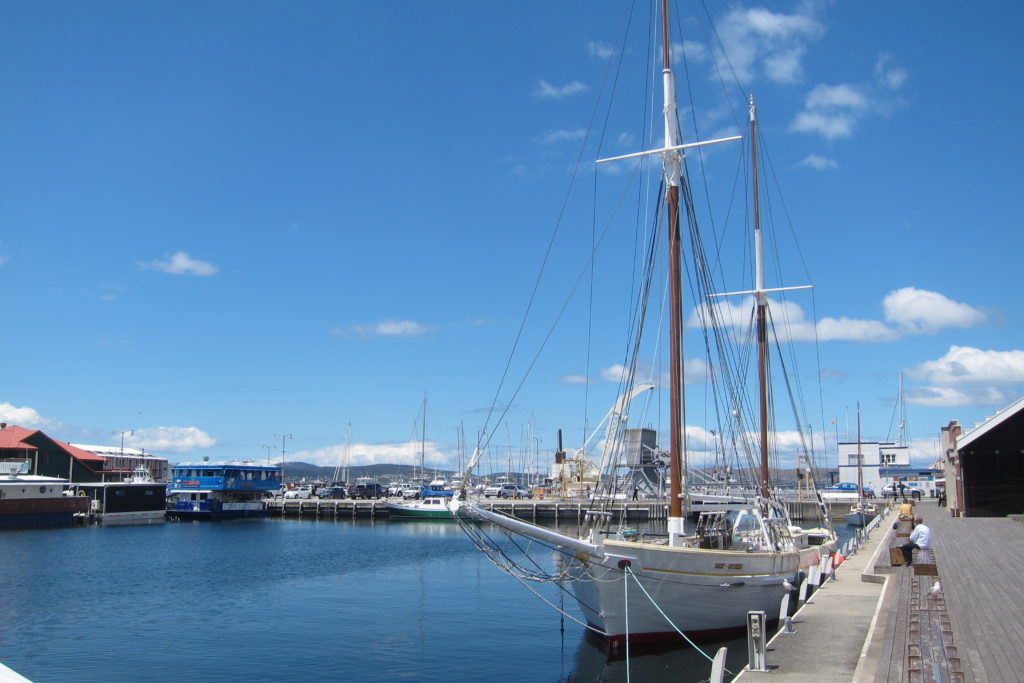
Eventually we arrive at the MONA. This place is astounding.
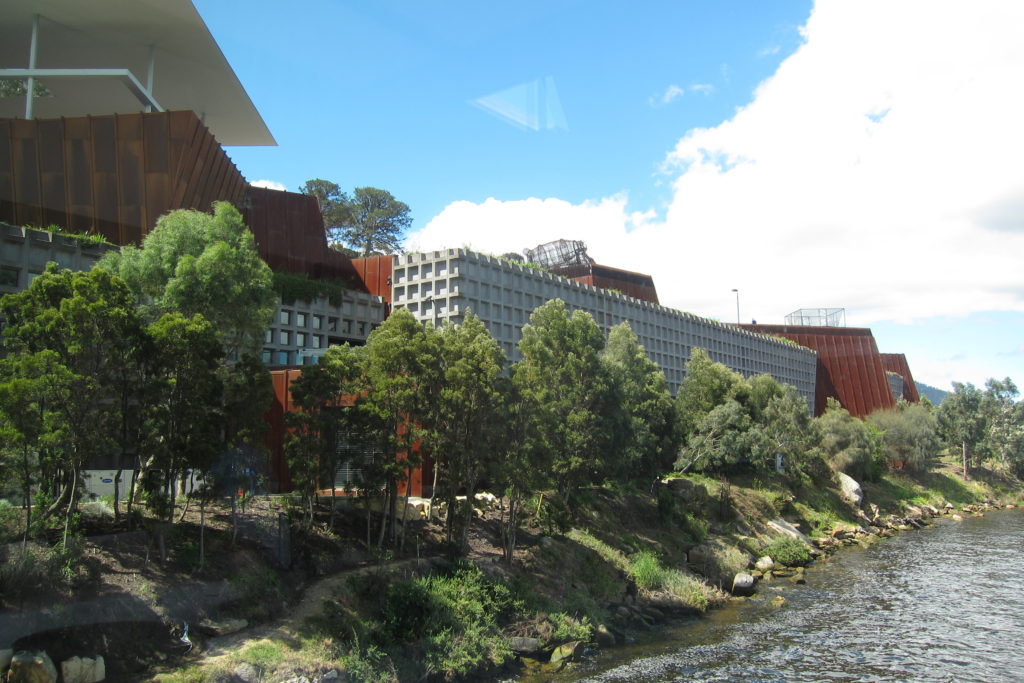
Most of it exists underground, carved out of the living Tasmanian sandstone.
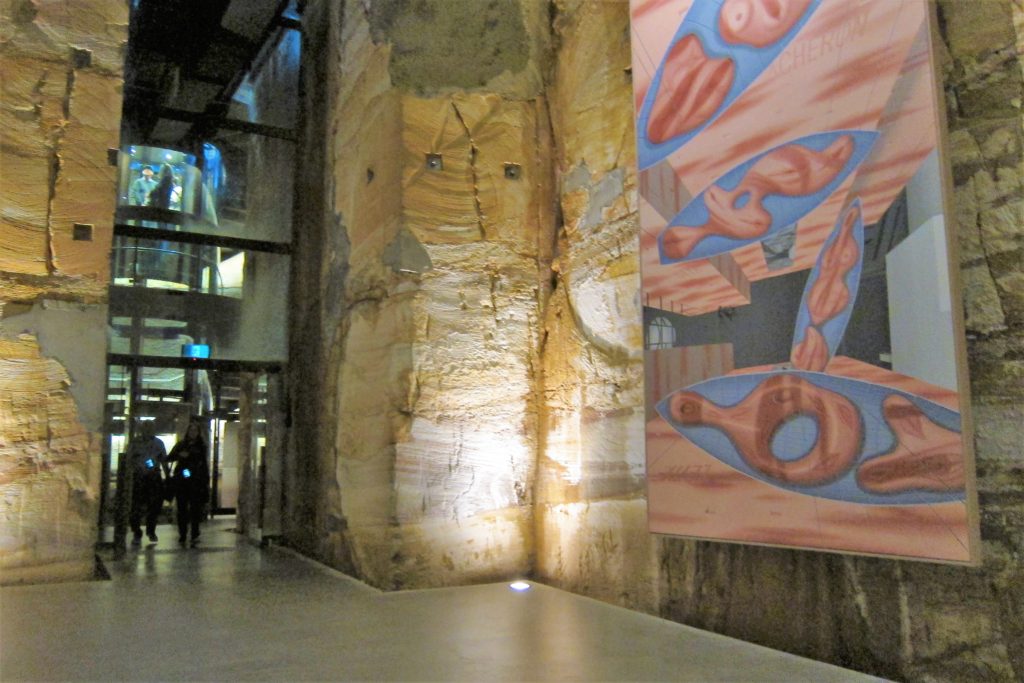
It’s private. It is founded by a local Hobart man, David Walsh. He made a lot of money as a gambler. He has no background in the art world. And he has built an institution – no, that’s too stuffy a word – the man has built a space-where-stuff-happens-that-is-endlessly-fascinating-to-experience. We need a new word for this.
New York, London, Paris, Berlin (and Sydney, and Melbourne) – eat your hearts out. You have nothing like this.
Below is UK artist Richard Wilson’s ’20:50′.
‘… a room flooded with engine oil. A waist-high barrier extends into the room allowing viewers to walk into it without touching the still, black mass. Museum staff repeatedly tells viewers not to touch it. ‘ – Marcus Teague, BROADSHEET Melbourne
I saw this at the Saatchi Gallery in London decades ago. </End of art brag>
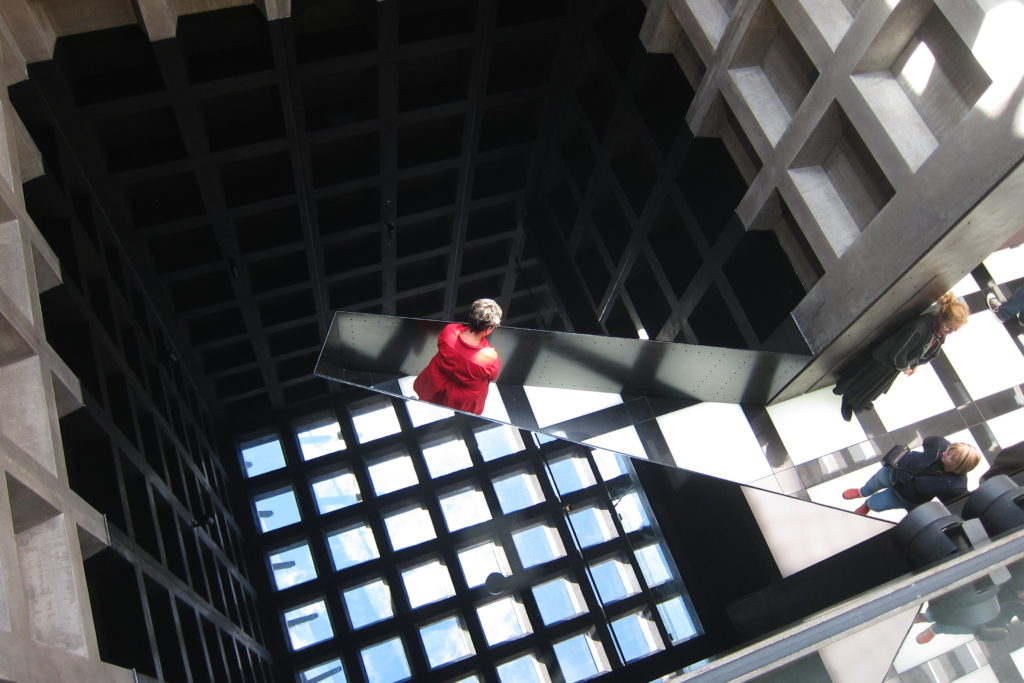
This is an interesting experiment.
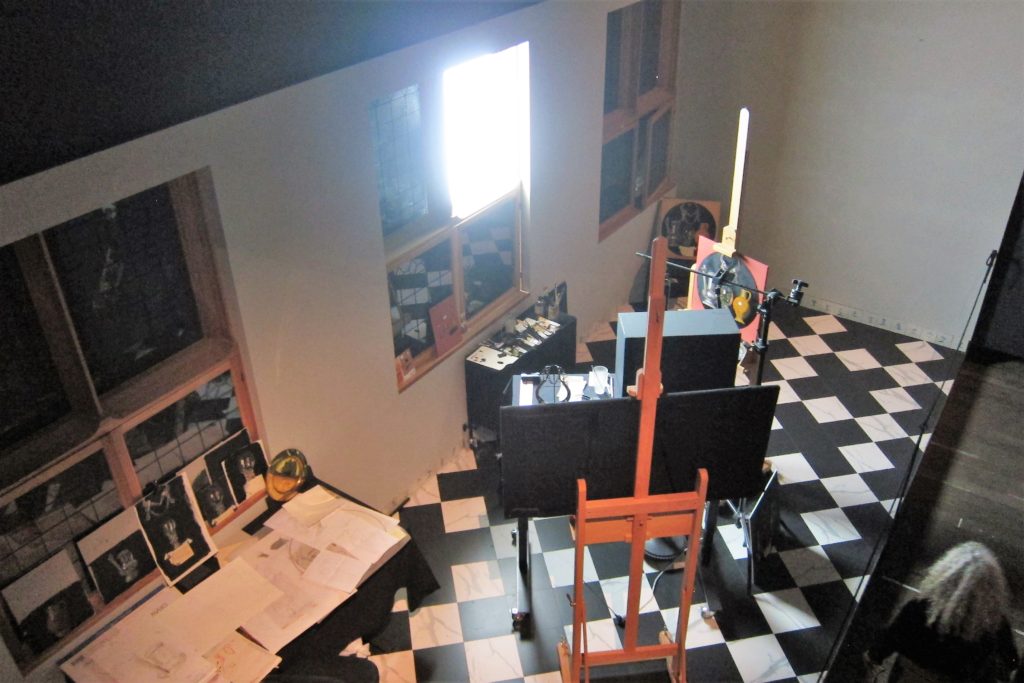
The MONA combines bleeding-edge modernism and the shatteringly unconventional with a total and utter lack of pretension. (This last is a very Australian aspect.)
It’s kind of like Louisiana north of Copenhagen or the Kröller-Müller Museum in the Netherlands – if you’re never in the area, you may never know they exist. Then you stumble across it and think ‘Holy shit! Why have I never heard of this place?’ Assuming you’re the artsy-fartsy type, of course.
The irreverence carries on in the signs asking people not to trespass in the vineyards surrounding the MONA.
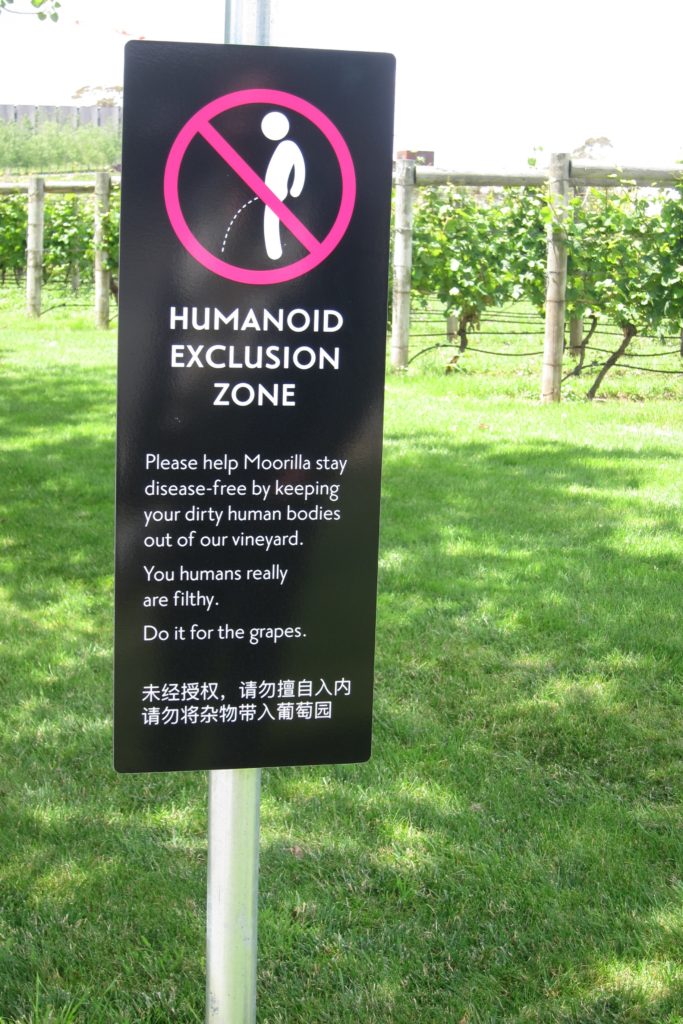
and another…
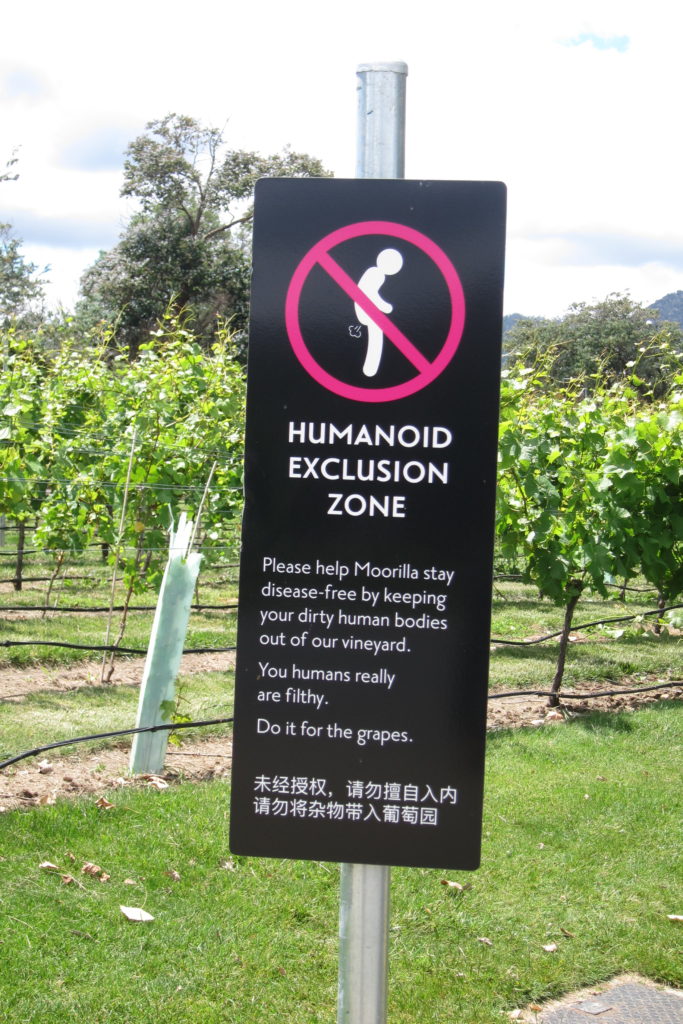
Also in Hobart, we visit a replica of Mawson’s huts. Douglas Mawson was an Antarctic explorer and geologist from South Australia.
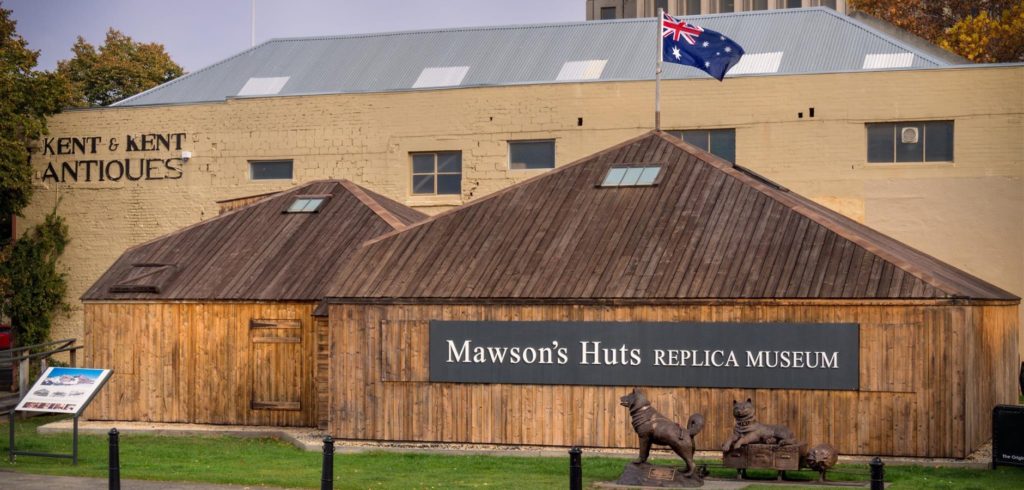
A fascinating man. He goes to the Antarctic with Shackleton, leads several other expeditions filled with derring-do, traipses around the outback doing pioneer geological surveys, then continues on in a career as a respected academic. Like Indiana Jones with an Australian accent.
A landmark of Hobart is the Tasman Bridge.
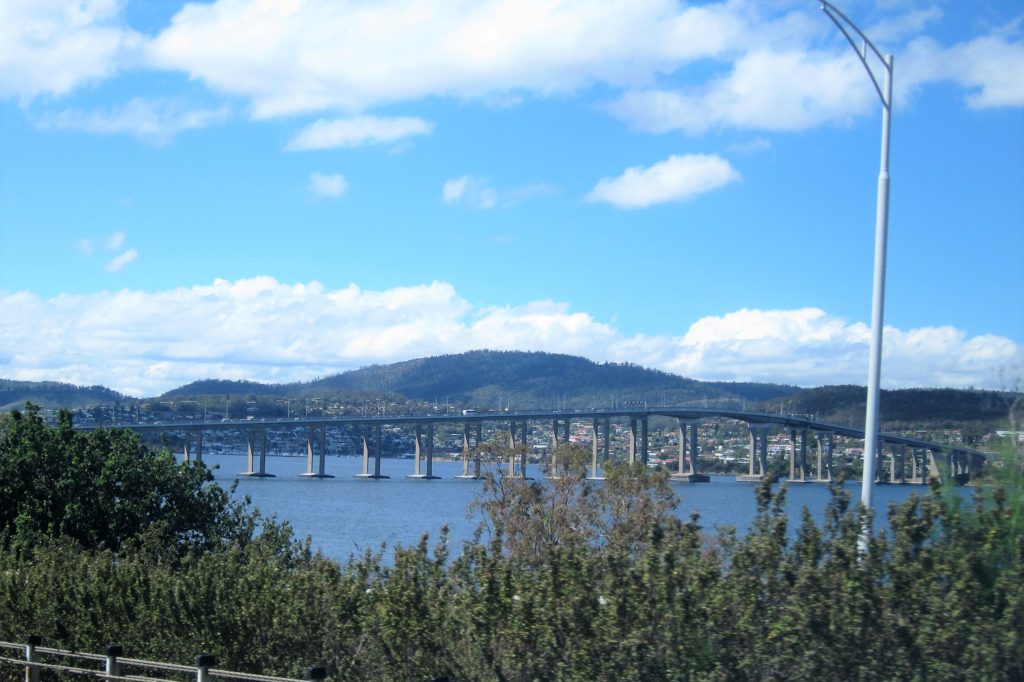
This was the site of a catastrophic accident in 1975.
Sight or Insight of the Day – Tasmania
This work at the MONA blows us away:
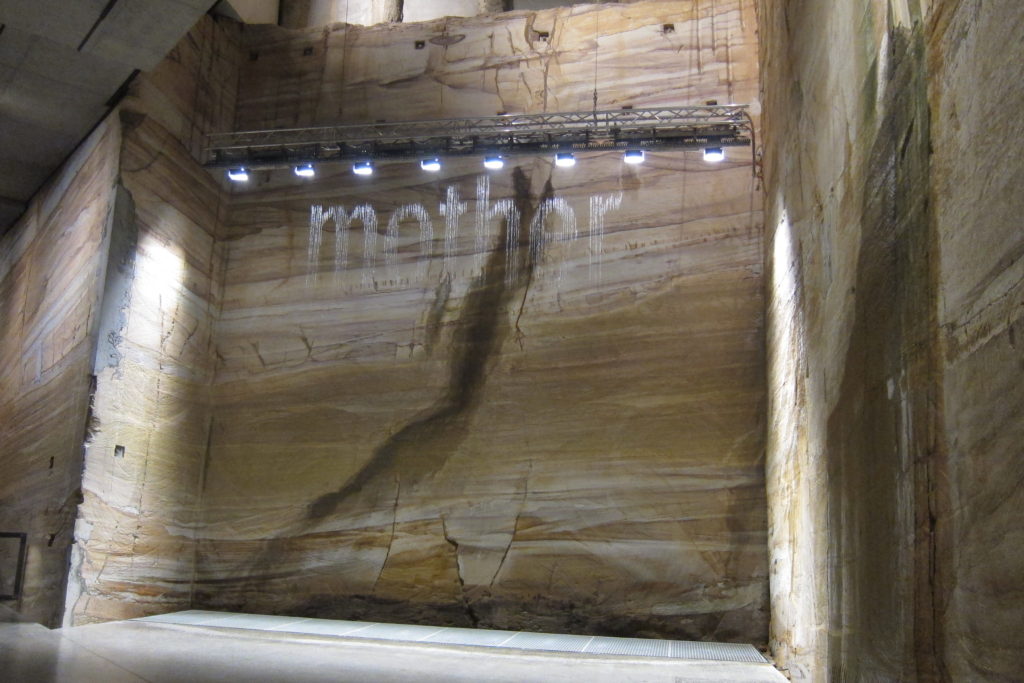
It’s by a German artist, Julius Popp.
A science gallery website describes it like this:
‘In BIT.FALL, information is represented by words generated by a computer program, based on a statistical algorithm. The program filters relevant terms from the current stream of news on the internet, and transmits the values to the control unit of BIT.FALL. In a split second, BIT. FALL releases hundreds of drops at specific intervals, creating a ‘waterfall’ of words. Each drop of water thus becomes a liquid and transient ‘pixel’ or ‘bit’, the smallest unit of information. ‘
So the words that appear are based on whatever’s trending on the web.
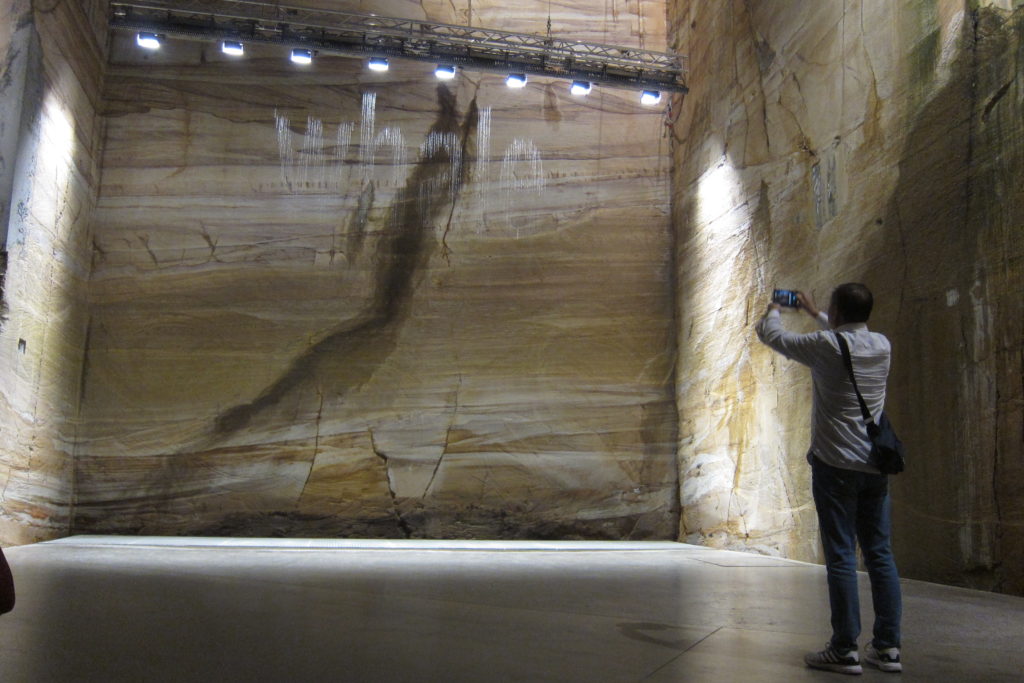
The words are crystal clear, but immediately dissolve into a mist, leaving you waiting for the next one. We stand watching this for ten minutes.
